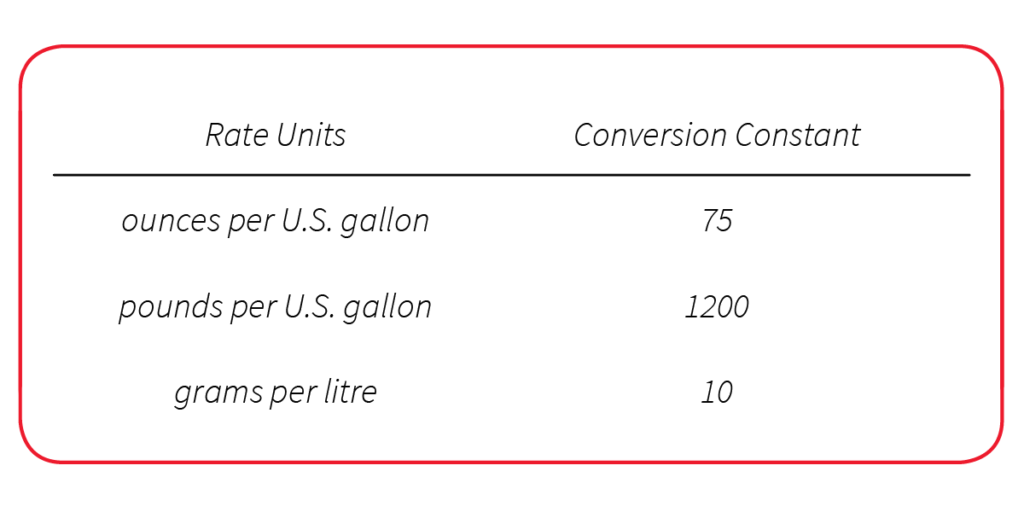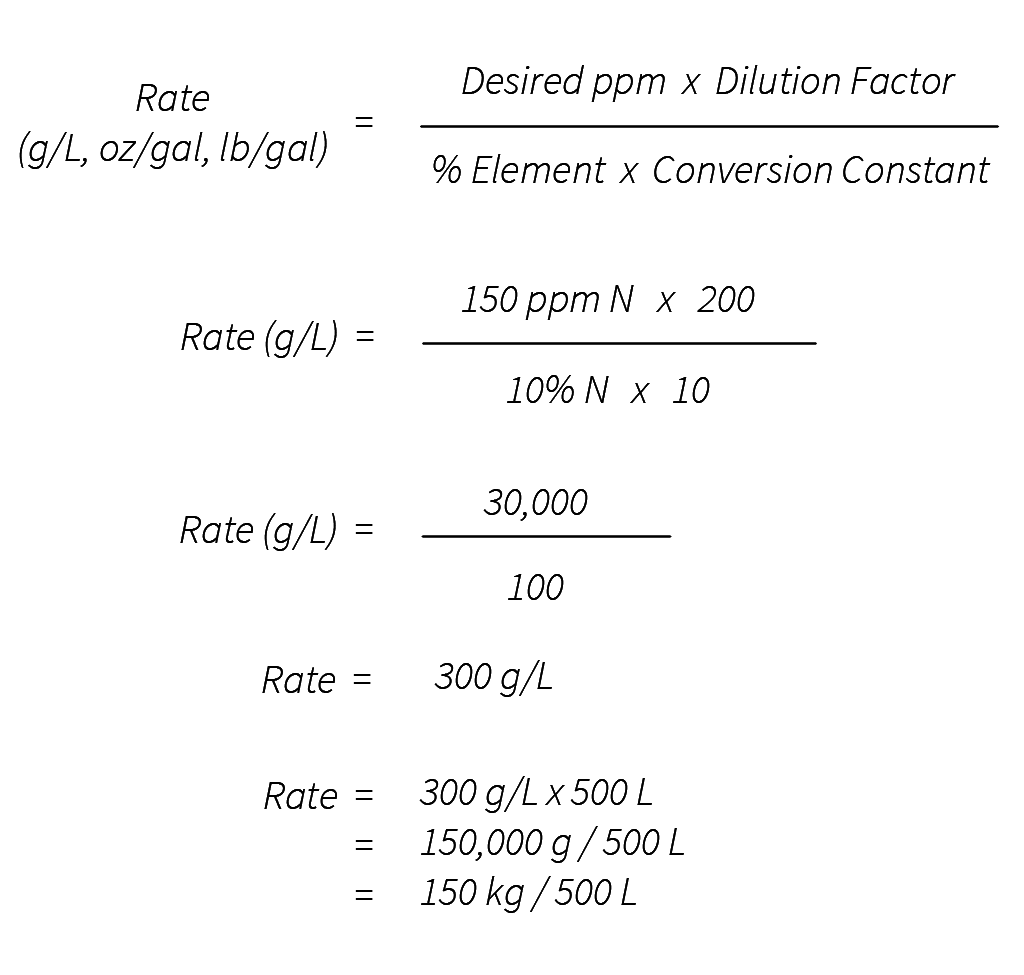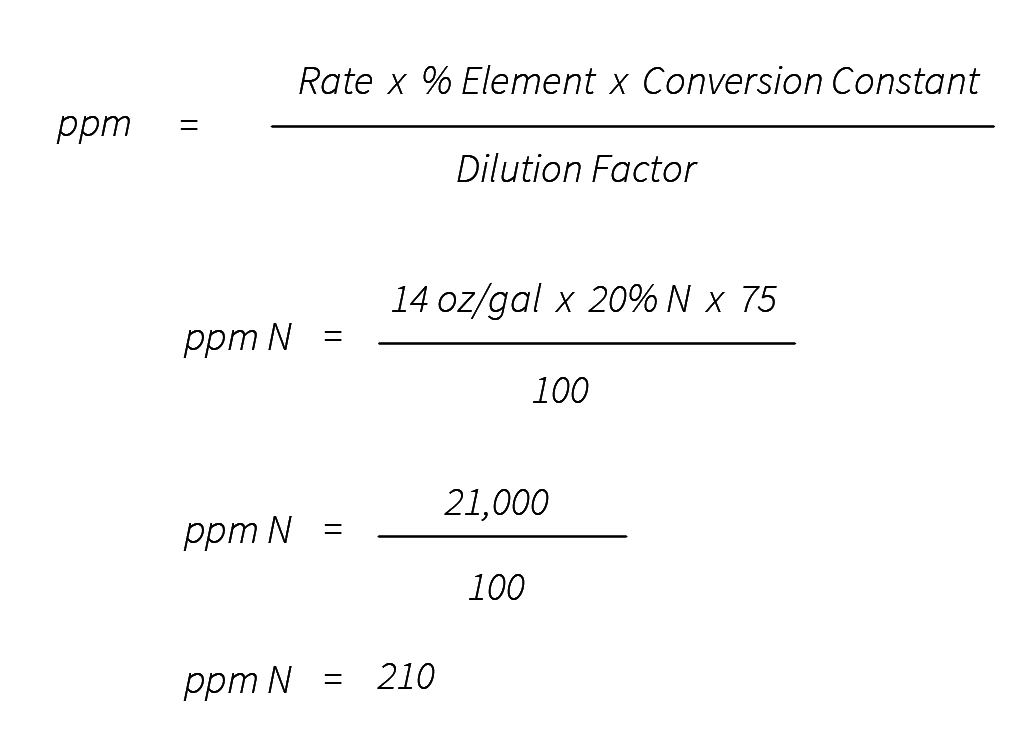How do I calculate fertilizer rates? Part-2
Fertilizer Rates & Concentration Values
Last post, we outlined the connection between electrical conductivity and the fertilizer concentration in your nutrient solution. Here, we outline the missing link – the relation between parts per million of Nitrogen (ppm N) and actual feeding rates (g/L, oz/gal).
In the horticultural industry, fertilization rates are often given in parts per million (ppm) of nitrogen (N). Parts per million is a convenient unit of measurement for indicating the concentration of fertilizer solutions. This is because nitrogen is the most commonly found nutrient in fertilizer formulations and because it allows us to state the concentration of a fertilizer solution independent of the fertilizer analysis. It is important to distinguish ppm N from total ppm, since total ppm typically refers to total dissolved solids, including those that are not coming from the fertilizer. When we refer to ppm N, we refer to nutrient concentration from the fertilizer only.
Calculating Rates Based on ppm N
When preparing a fertilizer stock solution, it is important to know the injector ratio of your system. This refers to the amount of stock solution that is delivered for each increment of irrigation water that passes through the injector. For instance, a 1:100 injector ratio will deliver a final 100 gallons of dilute fertilizer solution for each 1 gallon of concentrated stock solution.
Other important factors include:
- The desired ppm you wish to feed of a specific element guaranteed in the fertilizer
- % of the element guaranteed in fertilizer
- Conversion constant determined by the units desired for your rate (see table below)


Example 1
You want to feed Plant-Prod MJTM Bloom 10-30-20 Water Soluble Fertilizer at 150 ppm N, and your injector is set to 1:200. Your tank is 500 L and you want to know how many grams of fertilizer to add to your stock tank.
Let’s list all the factors you know:
- Desired ppm N = 150
- Injector ratio = 200
- % of the element guaranteed in fertilizer = 10
- Conversion constant for g/L (see table above) = 10
Now let’s put all that into the equation:

Now you know that you need to add 150 kg of Plant-Prod MJTM Bloom Water Soluble Fertilizer to your 500 L stock tank to have a final fertilizer solution of 150 ppm N. Note that the ppm N in your stock tank will be 200 x this concentration since you have an injector system set to 1:200.
Example 2
Copy: What if you have a rate in oz/gal that you’ve been using and want to compare it to a recommendation that is in ppm N? All you have to do is rearrange the equation.
Say you’ve been diluting 14 oz/gal of Plant-Prod 20-10-20 high Nitrate Water Soluble Fertilizer and using an injector set to 1:100.
Again, let’s list all the factors you know:
- Rate in ounces per US gallon = 14
- Injector ratio = 100
- % of the element guaranteed in fertilizer = 20
- Conversion constant for oz/gal (see table above) = 75
Now let’s put all that into the equation:

Now you know that you are feeding 210 ppm N when mixing a stock solution of Plant-Prod 20-10-20 high nitrate water-soluble fertilizer at a rate of 14 oz/gal and using an injector ratio of 1:100.
Want to cut your fertilizer costs and increase grower profitability?
Learn how high-quality fertilizers can help you cut fertilizer costs, and labour costs and increase your growing productivity here.
For more fertilizer productivity tips, check out these blog posts:
- How do I calculate fertilizer rates? Part-1
- How Do You Check Your Fertilizer’s Quality?
- How Do I Know If My Plants Need Calcium?
Plant-Prod manufactures water-soluble fertilizers for fruit trees, plants and flowers. The choice of growers from California to Maine for over 70 years, Plant-Prod fertilizers are made from the finest raw ingredients in the world, tested constantly for purity and turbo-milled to ensure 100% solubility in order to help you improve yields while cutting fertilizer costs. Click here to find a Plant-Prod fertilizer supplier near you.
